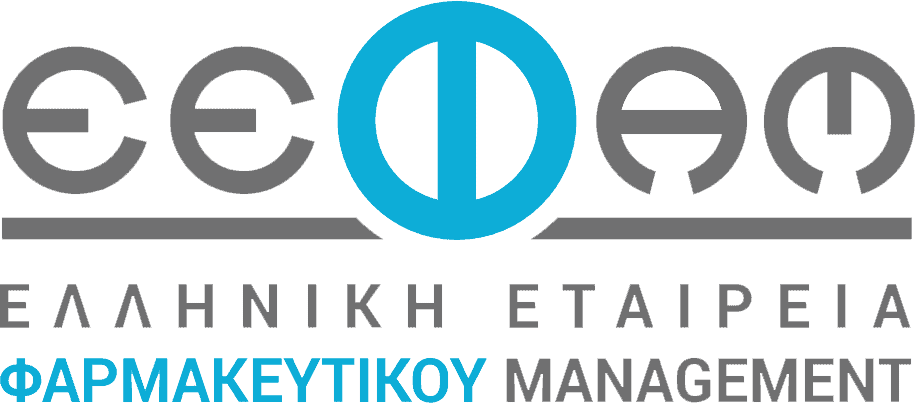Blog
Blog
IQVIA’s OG of data analytics on the latest clinical trial trends

Murray Aitken is a numbers guy — always has been, always will be. For more than two decades Aitken has been reporting on and tracking the trends, business strategies and transformations that impact the global life sciences ecosystem, first at IMS Health and now at the IQVIA Institute for Human Data Science.
“By nature I’m an analytical person, and anytime I can get my hands on numbers, I like to understand what they say and try to draw some insights from them,” he said. “I’m also very conscious of the fact that within healthcare there’s such a broad range of issues. And because of the evolution of our understanding of human health, biology and disease, things keep changing all the time.”
Becoming executive director of the Institute, which he was instrumental in setting up more than 12 years ago, was a career highlight. PharmaVoice recognized Aitken in 2005 as one of the first PharmaVoice 100 honorees for his inspiring leadership and visionary understanding of the global healthcare ecosystem. After growing up on a sheep farm in New Zealand, he lived in the U.S. and Asia and has traveled the world, giving him a global perspective of healthcare.
“We know that trials need to be representative of the underlying disease population, but we also recognize there’s a lag here.”
“As I always say, every country that I travel to is dealing with and grappling with some version of the same set of issues around their healthcare system — access to medicines, investment in R&D, incorporation of digital tools,” he said. “There’s a common set of issues, and everyone’s dealing with them slightly differently. And I’m very motivated to understand how things are playing out in different parts of the world. This gets me out of bed in the morning with a leap.”
Last month, the IQVIA Institute released its annual “Global Trends in R&D” report, which not only tracks overall trial productivity, but measures success for other notable industry goals. For example, this year’s report found that despite the various efforts to increase clinical trial diversity, participation levels have still failed to reflect U.S. demographics and in general, Black inclusion has been on the decline for 10 years.
Meanwhile, there was a growing share of first-in-class launches in 2022, investment flows similar to pre-pandemic times and clinical trial resiliency despite the pandemic stretching into 2022.
Here, Aitken breaks down some of the other key findings from the report, identifies trends to watch and highlights one standout moment in the industry.
This interview has been edited for brevity and style.
PHARMAVOICE: One of the things that stood out in this year’s report was the increase in clinical development productivity, which rebounded in 2022, reversing a 10-year downward trend. What’s driving this?
MURRAY AITKEN: When we talk about clinical development productivity, there are various metrics that go into that calculation — how many subjects are enrolled in the trials, how many sites are there, how many countries, endpoints (and) inclusion/exclusion criteria. For 2022, we reported a steep uptick in productivity. A lot of that was driven by the fact that we had fewer subjects being enrolled in trials and part of that was a reflection of the impact of the COVID trials. That being said, we also saw reductions in the number of average sites for a trial, the number of countries, (and) basically a leveling off of the number of endpoints. That’s only a one-year trend, which is not to conclude it’s a long-term trend. But we did see some easing, shall we say, of those other contributors to the productivity equation that we track.
What are some of the other key trends you’re seeing for 2023?
One trend is the mix of molecules being subject to clinical trials. As we show in our report, we’ve seen a leveling off of the number of molecules for rare cancers being investigated. While the number for common cancers continues to rise, we saw an easing of the trend line for rare cancers and for rare diseases more generally, which have been on a very steep upward slope. At the same time, we see more trials for depression, more trials for obesity, many more trials in immunology and in other neuroscience areas. And most of those areas are all for larger populations, potentially requiring larger trials as well.
We always have to remember that there’s a shifting of activity that’s going on. In addition, we are looking at what we call ‘accelerators of productivity novel trial designs,’ which we think are very important. We’ve seen a pretty steady increase in those, and I think we’re at a point where these will become more commonplace. I hear about these in the context of oncology trials and the fact that patients are not necessarily well-served by single-agent trials with a traditional start and end trial model. Where platform trials or adaptive trials can be a much more effective way to more rapidly test a whole suite of treatment options, both novel and potentially existing, so I think watching this trend will be important.
38%
64
—IQVIA Institute for Human Data Science’s “Global Trends in R&D 2023” report.
I think the incorporation of some aspect of a digital, whether it be a connective device or remote monitoring of the subjects, or e-consent or e-commerce. All of these were clearly moving down that pathway, maybe not as fast or as smoothly as the hype would have you expect, but nevertheless, this is the direction we are going.
And then of course the broader use of artificial intelligence that can cut across all aspects of clinical development. I don’t think we’ve yet to see the full force of AI play out. And that’s definitely an area that we are watching very closely.
Post-pandemic, is there a fear the industry will revert to pre-pandemic operational norms and strategies?
We are seeing some of that. I remain optimistic that reasonable minds will prevail and we will recognize that going back isn’t going forward. I think the other variable is there’s lots of stresses and pressures in the system overall. We’re dealing with very high levels of scientific risk being taken in advancing molecules into the clinic. We are seeing many dimensions of complexity become more significant. We now have more connected devices being used in the course of trial, which bring great benefits and new opportunities, but also a level of complexity to the sites and the investigators. Those pressures are real and intensifying.
I’m hopeful that we see those pressures coming to bear and making the broader ecosystem recognize that we can’t go back to the old ways. Because to the extent that scientific risk has been increasing in the way we track composite success rates, we’re at an all-time low, that has to be offset by other productivity drivers to take costs out, to accelerate programs, to reach decision points in the clinical development program faster. There needs to be a balance, and I think that’s where the lessons learned from COVID can be very helpful and indeed essential to maintain the balance in this ecosystem.
You touched on something that has been top of mind for a long time — the sites and pressure on the sites. They are truly the gatekeepers to clinical development. Why is this still such an issue?
Sites come in different flavors in different parts of the world, sites that are also providing clinical care in addition to being engaged in clinical trials. Not that I want to set those up as alternatives, because increasingly we want them actually to be integrated. But those clinical care centers were clearly and continue to be disrupted from both the pandemic and the burnout, which is still affecting them.
We still have more work to do to enable sites or centers of care to participate in trials, (and) provide the infrastructure and training to the clinical staff who need to be involved. At the same time, we need to diversify the locations and patient pools that these sites are able to draw from in the quest to increase diversity in clinical trials — and that’s another level of pressure. It’s also motivation to bring a broader pool of sites to (the world) beyond academic teaching centers, which in many cases are not very diverse in terms of their population mix. But that also requires time and investment.
And it’s going to be years before we see the impact of the efforts that are starting today, right?
Yes. And that’s the point we made in our report, where we showed those trials that were completed and have reported. As of the end of 2022, we’ve still got a very significant gap to close in terms of basic demographic representation. We know that trials need to be representative of the underlying disease population, but we also recognize there’s a lag here; and there’s no question that the level of commitment, investment and visibility being given to this issue over the last two to three years has motivated everyone to behave differently. We’ve yet to see that show up in terms of completed trials with race and ethnicity data as required to be reported.
What about the flip side — post-marketing and outcome studies and real-world data? Is there movement in terms of access to more diverse populations?
Yes. We also did a report on Advancing Diversity in Clinical Development through Cross-Stakeholder Commitment and Action and we highlighted the fact that the discussion around diversity in clinical trials is much too narrow. Obviously, there’s the preclinical work that has to go on. But importantly, and in the context that nobody wants to slow down drug approvals for the sake of including more representative populations in the pivotal trials, there is an opportunity to track, monitor and report on the real world use of these drugs. And I think manufacturers would be well-served to demonstrate their commitment to reducing disparities in health outcomes, which is what this is really focused on, by sharing some of the evidence that they are able to gather more easily than ever and not expensively. We can actually see the real world use of these drugs as well as the efficacy and any side effects. I don’t hear a lot of companies yet talking about doing this. (But) this is something we should all be discussing, including the FDA, in this context of our collective effort to reduce disparities in health outcomes.
So, is it going to take the FDA putting a stake in the ground for companies to invest in this?
I hope not. I’m optimistic the companies that are making public commitments to their efforts to improve healthcare for all recognize the contribution that they can make by gathering and publishing this kind of data. It will also draw attention to any issues, or some of the issues, that reduce access to medicines for all, including payment programs starting with Medicaid program, but more generally looking at where some of the payer actions, whether it be pre-authorizations and so on, have a disproportionate impact on underserved communities once those drugs are being used there. Transparency is good for everyone. We may not like what it shows to begin with, but it at least gives us a signpost of what the baseline is and where we need to go. And enable us to see if in fact we are making progress along this journey.
We work hard in our diversity report to make the case that we shouldn’t be satisfied with enrollment numbers in clinical trials. Again, in the context that the real goal here is not only to understand the biological responses from different subpopulations to a particular disease and therapeutic, but to look at this through the lens of the level of disparity in outcomes that we see across these different subpopulations and we can tackle this problem.
You’ve been tracking the industry for more than two decades. Is there one particular moment that stands out for you?
What comes to mind is the Vioxx withdrawal, which I think was a seminal moment in many respects.






